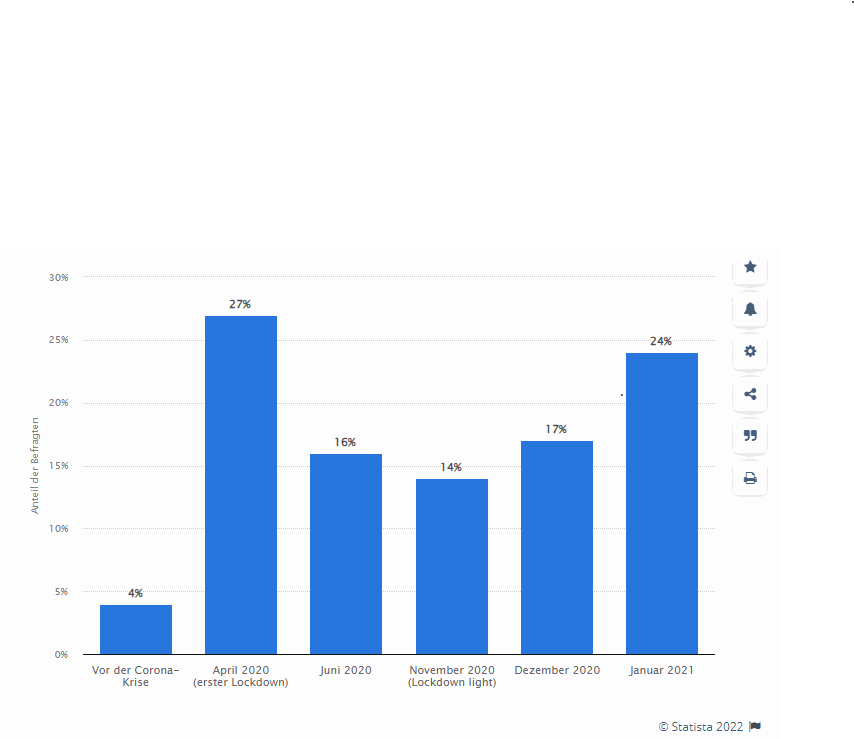Nach nun knapp zwei Jahren Corona-Pandemie lässt sich mit Sicherheit sagen, dass diese enorme Flexibilität in allen Bereichen unserer Gesellschaft verlangte.
Auch Veränderungen in der Arbeitswelt stellten viele Arbeitnehmer vor eine neue Herausforderung, denn kurzfristig entstand oft die Notwendigkeit, von einem auf den anderen Tag die Arbeit vom Büro ins heimische Arbeits-, Wohn- oder gar Schlafzimmer zu verlegen. Das Homeoffice rückte in den Mittelpunkt und bedeutete auch für Arbeitgeber oft eine Umstrukturierung der Organisation, Kommunikation und IT-Landschaft. Fest steht, die Pandemie hat die Arbeitskultur verändert.
Doch wie stand es vorher um das sogenannte Homeoffice, konnte sich der Trend etablieren und wie geht es nach dem geplanten Wegfall der Homeoffice-Pflicht und nach der Pandemie mit der Heimarbeit weiter?

Schaut man sich die Homeoffice-Nutzung genauer an, gilt es zu beachten, dass diese im internationalen Vergleich sehr unterschiedlich ausfällt. Die Niederlande und Finnland waren und sind hierbei die Vorreiter - bereits vor der Pandemie arbeiteten im Normalfall dreimal so viele Arbeitnehmer von zuhause aus wie in Deutschland.
Auch ist zu bemerken, dass die Homeoffice-Möglichkeit nicht unbedingt immer angenommen wurde. Eine Umfrage vom ifo Institut zeigt, dass ungefähr 40 Prozent der befragten Unternehmen die Möglichkeit der Heimarbeit anboten, allerdings die Hälfte der Arbeitnehmer dies kaum nutzte. Zudem ist die Möglichkeit des Angebots und der Nutzung je nach Sektor unterschiedlich verbreitet.
Trotz dieser Unterschiede lässt sich schnell feststellen, dass mit der Corona-Pandemie die Homeoffice-Nutzung deutlich anstieg. Während in Pandemie-Hochzeiten ungefähr ein Viertel aller Arbeitnehmer im Homeoffice tätig waren, war das Arbeiten von zuhause aus vor dem Ausbruch der Corona-Pandemie erstaunlich wenig verbreitet in Deutschland.
Laut einer Studie von Statista und Eurostat arbeiteten im Jahr 2019 lediglich knapp fünf Prozent der Beschäftigten üblicherweise im Homeoffice, sieben Prozent gelegentlich und 87 Prozent nie. Im Zuge der Corona-Pandemie stieg die Zahl der im Homeoffice arbeitenden Beschäftigten in Deutschland von vier Prozent auf 27 Prozent im ersten Lockdown, April 2020. Plötzlich war für viele Unternehmen und Arbeitnehmer die Heimarbeit keine Alternative mehr, sondern eine dringende Notwendigkeit. Denn Ziel war es, die Ausbreitung des Virus zu verringern und den Gesundheitsschutz zu gewährleisten.
Weiterhin zeigt die Erhebung, dass im weiteren Verlauf des Jahres 2020 die Nutzung der Möglichkeit, von zuhause aus zu arbeiten, jedoch wieder abnahm. Im Juni 2020 betrug die Zahl der im Homeoffice Arbeitenden nur noch 16 und im November nur noch 14 Prozent. Hintergrund hierfür waren sinkende Infektionszahlen und schrittweise Lockerungen.
Mit steigenden Infektionszahlen entschieden sich jedoch wieder zunehmend mehr Arbeitnehmer, ihre Erledigungen in Heimarbeiten aufzunehmen, sodass die Zahl auf 24 Prozent im Januar 2021 anstieg. Aktuell erkennbar ist trotz unterschiedlich hoher Infektionszahlen und somit unterschiedlich hoher Homeoffice-Nutzung, dass die Heimarbeit insgesamt seit Beginn der Pandemie deutlich zugenommen hat.

Die Gründe für die steigende Homeoffice-Affinität sind für die Arbeitnehmer vor allem die bessere Vereinbarkeit von Familie und Beruf sowie flexiblere Arbeitszeiten. Obwohl viele Arbeitnehmer das mit dem Homeoffice einhergehende Verschwimmen von Arbeit und Freizeit sowie fehlenden direkten Kontakt zu Kollegen als Nachteil sehen, sprechen sich 73 Prozent der Deutschen für einen gesetzlichen Anspruch auf Homeoffice aus.
Auch der Chef des Deutschen Gewerkschaftsbundes fordert die Bundesregierung auf, das "Homeoffice der Zukunft“ zeitnah durch klare Bestimmungen zu unterstützen und dabei Arbeits- und Gesundheitsschutz verbindlich zu regeln.
Für Unternehmen bedeutet dies eine große Herausforderung der arbeitsrechtlichen, organisatorischen und technischen Lösungsfindung, vor allem bei Fragen bezüglich Arbeitszeit, Arbeitsplatz und Kommunikation. Die Bundesvereinigung der Deutschen Arbeitgeberverbände ist gegen eine Verlängerung der gesetzlichen Homeoffice-Pflicht. Zwei Drittel der Arbeitgeber wollen nach der Pandemie wieder zurück zum alten Status quo.
Arbeitsminister Hubertus Heil dagegen spricht sich dafür aus, dem "coronabedingten ungeplanten Großversuch zum Homeoffice“ grundlegende Konsequenzen zu ziehen und sieht in seinen Plänen vor, dass Arbeitgeber künftig ihren Beschäftigten das Arbeiten im Homeoffice ermöglichen müssen, wenn keine betrieblichen Gründe dagegensprechen. In einem solchen Fall soll allerdings für Beschäftigte die Möglichkeit bestehen, dies mit dem jeweiligen Vorgesetzten erörtern zu können. Ob und wie genau diese Konsequenzen realisiert werden, bleibt noch offen.
In der Öffentlichkeit wird immer wieder Kritik laut, deutsche Unternehmen hätten selbst in der Krise noch längst nicht das Potenzial des Arbeitens von zuhause aus ausgeschöpft. Laut ifo-Institut-Schätzungen könnten 56 Prozent der deutschen Beschäftigten grundsätzlich von zuhause aus arbeiten - mehr als doppelt so viele wie in Pandemie-Höchstzeiten.
So oder so - durch Corona wurde zumindest schon mal deutlich, dass Arbeitsprozesse schnell digitalisiert werden und auch ohne Anwesenheit im Büro funktionieren können. Ebenso wurden neue Kommunikationstools wie Videokonferenzen sowie neue digitale Fähigkeiten entwickelt. Daher haben viele Unternehmen die Absicht, die Möglichkeiten des Homeoffice weiter auszubauen, was vielen Arbeitnehmern entgegenkommen und für mehr Flexibilität sorgen wird. Nichtsdestotrotz werden Branchenunterschiede bleiben - höchste Affinität für Homeoffice haben dabei wissensintensive Dienstleistungsbranchen.
Zu erwarten ist jedoch keine vollständige Ersetzung des Büros, sondern wohl eine Ausdifferenzierung, da einerseits persönlicher Kontakt und Interaktion für Arbeitnehmer und -geber wichtig sind und andererseits sich auch Arbeitnehmer vorrangig eher eine Wahlmöglichkeit wünschen. Von daher wird es entscheidend sein, die richtige Balance zwischen Büro- und Heimarbeit zu finden, welche je nach Unternehmen, Sektor und persönlicher Situation variieren kann.
Quellen: www.deloitte.de, www.statista.de, www.rnd.de, www.bmwi.de
Homeoffice im Wandel